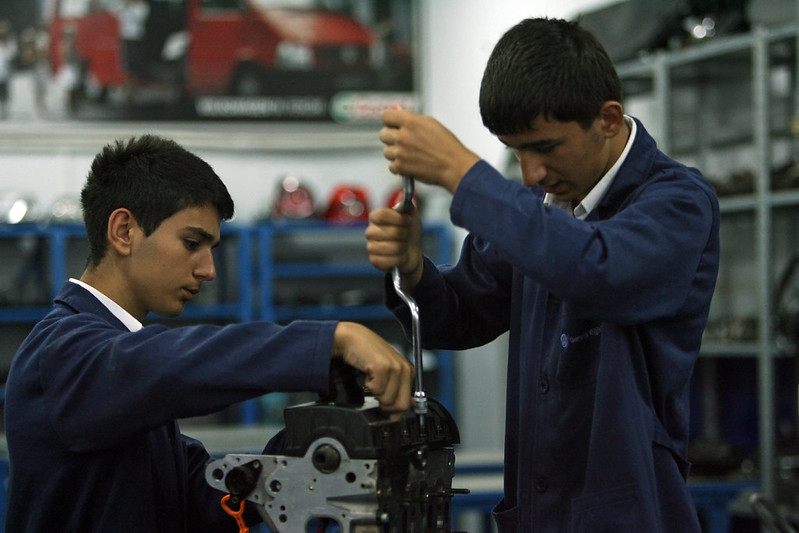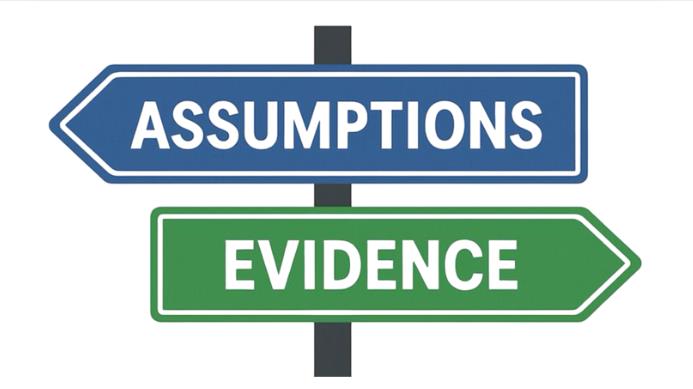We are in the midst of a global learning crisis. This is the clear message from recent major reports: According to the World Bank’s 2018 World Development Report on learning, “hundreds of millions of children reach young adulthood without even the most basic life skills.” And the Education Commission’s 2016 Learning Generation report estimates that “over three-quarters of a billion young people in low- and middle-income countries will not be on track to acquire basic secondary-level skills.” Alarms are being raised that while the substantial resources being spent on education by governments and families have succeeded in increasing enrollments to unprecedented levels, schools are failing to produce more learning, including the skills needed to lift the productivity and competitiveness of economies.
The challenge of the classroom
As enrollments in schools and universities rise, so does the diversity of those who attend them. It has become patently unrealistic to expect today’s classrooms to cater for the needs of every student. The tendency to teach to the ‘median student’ has been a powerful impetus to reach targets like ‘education for all.’ Even those admirable teachers who succeeded in one-room schoolhouses a century ago would be hard-pressed to impart the knowledge required in today’s curriculum. Both the scale and scope of instruction have changed dramatically. Enrollment numbers have expanded in all countries, resulting in larger class sizes, with students from a wider range of economic and cultural backgrounds. In addition, teachers are expected to cover increasingly heavier curricula that include instruction of the 3 R’s as well as a variety of subjects including computer literacy, civics, fitness and health, sex education, and environment. These changes reflect the important roles that we want schools to play in our societies and economies, but many schools are ill-prepared and ill-equipped to do so.
As we look into the future, it’s hard to predict what knowledge and skills students will need. A 2017 McKinsey report on jobs in 2030 says that, because of automation, the “transition will be very challenging – matching or even exceeding the scale of shifts out of agriculture and manufacturing we have seen in the past.” The 2019 World Development Report: The Changing Nature of Work warns of “the vast uncertainty involved in making predictions about the future” and how technological change is making it “harder to anticipate which job-specific skills will thrive and which will become obsolete in the near future.” So, how can schools change to deal with such disparity and uncertainty?
Technology can help. Recent years have seen promising education technologies develop remarkably fast. Adaptive learning through artificial intelligence and big data, social learning through digital platforms, immersive learning through virtual reality (VR), augmented reality (AR), and gamification are among the smart tools that can provide personalized learning for every student. These technologies deliver an unlimited world of knowledge to connected students, as well as tools for honing specific problem-solving skills. Support outside the classroom, like the online videos on numerous subjects produced by the Khan Academy, can be accessed for free by students and teachers anywhere on the planet as long as web connectivity is available. In classrooms at Arizona State University (ASU), students are using a computer-based adaptive learning system that provides personalized feedback and suggests learning pathways based on their performance. This “high-tech learning” system has enabled ASU professors to focus their teaching time on “high-touch learning” such as project-based learning and hands-on learning through laboratory experiments in small groups.
For now, research has shown that the use of new technologies in schools is not a panacea. A recent 3ie review on what works to improve education shows that the impact of computers in classrooms on learning from rigorous studies is not statistically indistinguishable from zero. The studies that show a positive effect are those in which the technological intervention is linked to teacher training and curriculum redesign. The lesson from the review is that investments in technological innovations must go hand-in-hand with changes in pedagogy that involve more than just putting digital devices in classrooms or the hands of students. Indeed, it takes a system – and more specifically, an innovation system.
An innovation system for education
A 2011 report by Deborah Jackson of the National Science Foundation argues that fostering innovation requires a system which “models the … complex relationships that are formed between actors or entities whose functional goal is to enable technology development and innovation.” Several frameworks have been developed for what such an innovation systems might look like. These frameworks share four common components that need to be in place to nurture innovation: people, infrastructure, economic resources, and an enabling environment. How do these four components in education systems measure up? In our opinion, not very well…yet.
- People. Unlike entrepreneurs who try hard to create new products, services, or procedures to maximize profits, teachers don’t have any incentive to find new ways of providing a learning experience for their students. Most teachers consider it their job to teach curriculum designed by others. So there is a critical need to redefine the education workforce, and figure out the roles teachers and principals can play to transform schools so they deliver the learning goals of every student. The Education Commission’s Education Workforce Initiative (EWI) aims to bring fresh thinking and new approaches to this key area.
- Infrastructure. We’ve seen the rapid emergence of new smart technologies, often called the “fourth industrial revolution,” which refers to the greater and wider availability of the internet of things, artificial intelligence, big data, 3-D printing, mobile devices (e.g., e-books), and 5G wireless communications that can be harnessed in schools for instruction and learning. However, schools are often the last places where teachers and students can find these technologies. For example, while Korea has some of the best ICT infrastructure in the world, including free Wi-Fi in every subway line, only 19 percent of classrooms had Wi-Fi connection in 2016. This is due to both the resistance of principals and teachers to embrace new technologies, and the concerns of parents about student addiction to internet use and gaming. But in lower-income countries, poor general infrastructure – for instance, lack of dependable power supply and telecommunications towers, especially in rural areas – are the binding constraint, coupled with school buildings that cannot keep technological devices safe from extreme weather or theft. In addition, the absence of computer know-how and technical services outside cities can render existing school infrastructure such as computer labs almost useless after an initial period of use.
- Economic resources. There is often very little or no discretionary funding that innovative teachers and principals can work with. The Education Commission estimates that getting more children in school and learning will require governments to double their spending from just 2 percent of GDP to 4-5 percent and the international aid community to supplement this increased level of domestic funding. However, the budget for innovations in teaching need not overload the education budget. With connectivity, content libraries are available for free to teachers and students. These innovations can also make it possible to reach excluded learners at lower cost while enhancing their learning through more targeted instruction and content material.
- Enabling environment. Despite the uncertainty about the impact of education technologies on learning, there’s an unstoppable positive buzz about them and a growing number of projects that apply these new technologies in education systems. Mike Trucano of the World Bank who has been following this field closely notes that “the overall volume of such projects, and the sophistication of many of them, are quite notable,” and that “[t]here is more happening, in more places, than ever before.” He identifies 20 emerging education technologies from around the world including Mindspark, an adaptive-learning product from Educational Innovations that aims to help children in India improve their skills in mathematics, and Eneza, which offers low-cost quizzes and related products to help learners in Kenya prepare for exams. Having this abundance of information easily available to students is a boon to learning, but teachers and school leaders must be able to help students use the information. Inertia is powerful, and vested interests within the education system may be reluctant adopters of innovations. System changes rather than piecemeal reforms could more effectively overcome this resistance.
Innovating to leapfrog
Unless education systems embrace new technologies and turn them into effective tools of teaching and learning, schools are likely to remain mired in the past – with a teaching model that was good for the Industrial Revolution but not for the Digital Revolution. Transforming systems is a daunting task—but the returns would be enormous. Education systems that develop an innovation ecosystem are equipped with the tools to leapfrog, allowing underperforming education systems to bound forward faster than the progress that rich countries have made over 150 years. They may even be able to outpace them, according to Rebecca Winthrop at the Brookings Institution. In industry, by taking advantage of new digital technologies within a robust innovation ecosystem, Korea surpassed Japanese and Western companies in the manufacture of mobile phones, TVs, and computer displays. Why couldn’t this work for education? There are many challenges that education systems around the world must address, but they can hardly go wrong by investing in a learner-centered innovation system.
Learn more about the Education Commission’s Education Workforce Initiative, and read the initial literature review.
This article was originally published on the Education Commission’s blog.






